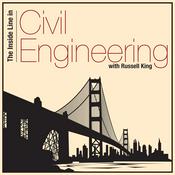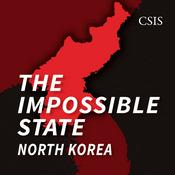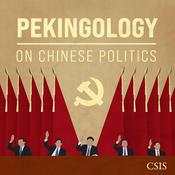Available Episodes
5 of 137
- Scarcity, Sovereignty, Strategy: Mapping the Political Geography of AI ComputeAs AI systems grow more powerful, the computational infrastructure behind them has become a strategic resource, one that is unevenly distributed across the world. This episode takes a deep look at the three layers of compute sovereignty: where data centers are located, who owns them, and who manufactures the chips that power them. Zoe explains how access to compute has quickly shifted from a technical issue to a core question of economic resilience and sovereignty.The conversation unpacks new research showing how few countries actually host advanced AI-relevant data centers, and how global dependencies on companies like Nvidia shape strategic decisions. Adarsh and Zoe discuss the implications for countries that are “compute deserts,” the growing push toward sovereign capabilities, and why a binary view of sovereignty is misleading. They also explore how countries are attempting to secure compute, through public investment, regional collaborations, and new transnational initiatives.Finally, the episode examines the emerging tension between the pursuit of compute sovereignty and the environmental and socioeconomic costs of data centers. As global investments flow into AI infrastructure, Zoe argues for a more grounded, people-centric approach to AI strategy, one that balances access, sustainability, and long-term national priorities amid evolving questions about the future of the AI industry.Episode ContributorsAdarsh Ranjan is a research analyst at Carnegie India where his research focuses on AI and emerging technologies, digital transformation, and technology partnerships. His current research explores India’s evolving policy on AI compute and digital transformation in Global South countries.Zoe Jay Hawkins is the co-founder and deputy executive director of the Tech Policy Design Institute. Zoe brings extensive experience designing tech policy from government, big tech, academic and think tank perspectives. Zoe worked for the Australian government across communications, innovation, and foreign policy portfolios, as a ministerial adviser and in the public service. She is a Research Associate at the University of Oxford and an expert researcher for the OECD, having started her career at the Australian Strategic Policy Institute. Every two weeks, Interpreting India brings you diverse voices from India and around the world to explore the critical questions shaping the nation's future. We delve into how technology, the economy, and foreign policy intertwine to influence India's relationship with the global stage.As a Carnegie India production, hosted by Carnegie scholars, Interpreting India, a Carnegie India production, provides insightful perspectives and cutting-edge by tackling the defining questions that chart India's course through the next decade.Stay tuned for thought-provoking discussions, expert insights, and a deeper understanding of India's place in the world.Don't forget to subscribe, share, and leave a review to join the conversation and be part of Interpreting India's journey.--------45:08
- Cybersecurity in Outer Space: A Growing ConcernThe conversation explores how cybersecurity is integral to space operations, drawing parallels with traditional air defense strategies. Blount discusses the historical context of cybersecurity in space, the role of international law, and the challenges posed by non-state actors. He emphasizes the need for a holistic approach to cybersecurity that includes both space-based and terrestrial components, and the importance of international cooperation in addressing these challenges.Blount warns of the increasing threats from cyber-attacks on space assets and the need for robust legal frameworks to ensure accountability and security. He calls for the development of comprehensive cybersecurity strategies that integrate space and cyberspace, ensuring resilience against a wide range of threats.How can nations protect their space assets from cyber threats? What role does international law play in governing space cybersecurity? How should countries collaborate to enhance global space security?Episode ContributorsP. J. Blount is assistant professor of space law at Durham University. He is also a visiting scholar at Mae Fah Luang University in Chiang Rai, Thailand. Previously, he served as a Lecturer in Law at Cardiff University, an adjunct professor for the LL.M. in the Air and Space Law at the University of Mississippi School of Law, a Postdoctoral Researcher at the University of Luxembourg, an adjunct professor at Montclair State University, and a Visiting Scholar at the Beijing Institute of Technology School of Law. Tejas Bharadwaj is a senior research analyst with the Technology and Society Program at Carnegie India. He focuses on space law and policies and also works on areas related to AI in military domain, Defence tech and Cybersecurity. Every two weeks, Interpreting India brings you diverse voices from India and around the world to explore the critical questions shaping the nation's future. We delve into how technology, the economy, and foreign policy intertwine to influence India's relationship with the global stage.As a Carnegie India production, hosted by Carnegie scholars, Interpreting India, a Carnegie India production, provides insightful perspectives and cutting-edge by tackling the defining questions that chart India's course through the next decade.Stay tuned for thought-provoking discussions, expert insights, and a deeper understanding of India's place in the world.Don't forget to subscribe, share, and leave a review to join the conversation and be part of Interpreting India's journey.--------36:52
- Unbundling AI Openness: Beyond the BinaryThe episode challenges the familiar “open versus closed” framing of AI systems. Sharma argues that openness is not inherently good or bad—it is an instrumental choice that should align with specific policy goals. She introduces a seven-part taxonomy of AI—compute, data, source code, model weights, system prompts, operational records and controls, and labor—to show how each component interacts differently with innovation, safety, and governance. Her central idea, differential openness, suggests that each component can exist along a spectrum rather than being entirely open or closed. For instance, a company might keep its training data private while making its system prompts partially accessible, allowing transparency without compromising competitive or national interests. Using the example of companion bots, Sharma highlights how tailored openness across components can enhance safety and oversight while protecting user privacy. She urges policymakers to adopt this nuanced approach, applying varying levels of openness based on context—whether in public services, healthcare, or defense. The episode concludes by emphasizing that understanding these layers is vital for shaping balanced AI governance that safeguards public interest while supporting innovation.How can regulators determine optimal openness levels for different components of AI systems? Can greater transparency coexist with innovation and competitive advantage? What governance structures can ensure that openness strengthens democratic accountability without undermining safety or national security?Episode ContributorsChinmayi Sharma is an associate professor of law at Fordham Law School in New York. She is a nonresident fellow at the Stoss Center, the Center for Democracy and Technology, and the Atlantic Council. She serves on Microsoft’s Responsible AI Committee and the program committees for the ACM Symposium on Computer Science and Law and the ACM Conference on Fairness, Accountability, and Transparency.Shruti Mittal is a research analyst at Carnegie India. Her current research interests include artificial intelligence, semiconductors, compute, and data governance. She is also interested in studying the potential socio-economic value that open development and diffusion of technologies can create in the Global South.Suggested Readings Unbundling AI Openness by Parth Nobel, Alan Z. Rozenshtein, and Chinmayi Sharma. Tragedy of the Digital Commons by Chinmayi Sharma. India’s AI Strategy: Balancing Risk and Opportunity by Amlan Mohanty and Shatakratu Sahu. Every two weeks, Interpreting India brings you diverse voices from India and around the world to explore the critical questions shaping the nation's future. We delve into how technology, the economy, and foreign policy intertwine to influence India's relationship with the global stage.As a Carnegie India production, hosted by Carnegie scholars, Interpreting India, a Carnegie India production, provides insightful perspectives and cutting-edge by tackling the defining questions that chart India's course through the next decade.Stay tuned for thought-provoking discussions, expert insights, and a deeper understanding of India's place in the world.Don't forget to subscribe, share, and leave a review to join the conversation and be part of Interpreting India's journey.--------48:02
- India’s Air Defense After Operation Sindoor: Lessons and the Road AheadIndia’s air defense has transformed from sparse radars in the 1960s to a multilayered network anchored by the Integrated Air Command and Control System (IACCS), linking radars, interceptors, and layered missile systems into a cohesive shield. Air Marshal Diptendu Choudhury underscores how decades of preparation, constant operational readiness, and the stress test of Operation Sindoor demonstrated the value of Army–Air Force integration and cost-effective counters to drones and missiles. He emphasizes that air defence is no longer just about protection—it is about extending reach into adversary airspace and enabling India’s offensive air power to operate with confidence.Looking ahead, Choudhury warns that the deepening China–Pakistan partnership, the economics of interception, and production scalability will shape India’s strategic calculus. He calls for IACCS to evolve into an Integrated Aerospace Command and Control System, expanding beyond airspace into near-space and space-based surveillance to achieve full-spectrum aerospace domain awareness. Building resilient, cyber-secure, and future-ready defences, he argues, is essential to preserving India’s edge against threats ranging from drones to ballistic missiles.How can India balance cost-effective counters against drones with the need for high-end missile defenses? What does China–Pakistan military cooperation mean for India’s future two-front strategy? How should India integrate space-based systems into its air defence to achieve true aerospace domain awareness?Episode ContributorsAir Marshal (Retd.) Diptendu Choudhury, Former Commandant, National Defence College, Delhi. An experienced pilot with over 5000 sorties on fighters, he has commanded a fighter squadron, IAF’s prestigious Tactics Air Combat Development Establishment, two frontline fighter wings, and has extensive experience in the development and execution of air operations at Command, Air Force and Joint Operations levels. He has been the Senior Air Staff Officer of WAC, Air Defence Commander of two operational Commands, AOC of IAF’s Composite Operational Battle Response and Analysis Group, as well as the ACAS Inspections, and Director Air Staff Inspections and Operational Planning and Assessment Group.Dinakar Peri is a fellow in the Security Studies program at Carnegie India. Earlier, he was a journalist with The Hindu newspaper covering defense and strategic affairs for almost 11 years. He is an alumnus of the U.K. Foreign Office’s Chevening South Asia Journalism Program and the U.S. State Department’s International Visiting Leadership Program. Every two weeks, Interpreting India brings you diverse voices from India and around the world to explore the critical questions shaping the nation's future. We delve into how technology, the economy, and foreign policy intertwine to influence India's relationship with the global stage.As a Carnegie India production, hosted by Carnegie scholars, Interpreting India, a Carnegie India production, provides insightful perspectives and cutting-edge by tackling the defining questions that chart India's course through the next decade.Stay tuned for thought-provoking discussions, expert insights, and a deeper understanding of India's place in the world.Don't forget to subscribe, share, and leave a review to join the conversation and be part of Interpreting India's journey.--------50:17
- Military AI and Autonomous Weapons: Gender, Ethics, and GovernanceThe episode opens with Bhatt framing the global stakes: from drones on the battlefield to AI-powered early warning systems, militaries worldwide are racing to integrate AI, often citing strategic necessity in volatile security environments. Mohan underscores that AI in conflict cannot be characterized in a single way, applications range from decision-support systems and logistics to disinformation campaigns and border security.The conversation explores two categories of AI-related risks:Inherent risks: design flaws, bias in datasets, adversarial attacks, and human–machine trust calibration.Applied risks: escalation through miscalculation, misuse in targeting, and AI’s role as a force multiplier for nuclear and cyber threats.On governance, Mohan explains the fragmentation of current disarmament processes, where AI intersects with multiple regimes, nuclear, cyber, conventional arms, yet lacks a unified framework. She highlights ongoing debates at the UN’s Group of Governmental Experts (GGE) on LAWS, where consensus has been stalled over definitions, human-machine interaction, and whether regulation should be voluntary or treaty-based.International humanitarian law (IHL) remains central, with discussions focusing on how principles like distinction, proportionality, and precaution can apply to autonomous systems. Mohan also emphasizes a “life-cycle approach” to weapon assessment, extending legal and ethical oversight from design to deployment and decommissioning.A significant portion of the conversation turns to gender and bias, an area Mohan has advanced through her research at UNIDIR. She draws attention to how gendered and racial biases encoded in AI systems can manifest in conflict, stressing the importance of diversifying participation in both technology design and disarmament diplomacy.Looking forward, Mohan cites UN Secretary-General António Guterres’s call for a legally binding instrument on autonomous weapons by 2026. She argues that progress will depend on multi-stakeholder engagement, national strategies on AI, and confidence-building measures between states. The episode closes with a reflection on the future of warfare as inseparable from governance innovation—shifting from arms reduction to resilience, capacity-building, and responsible innovation.Episode ContributorsShimona Mohan is an associate researcher on Gender & Disarmament and Security & Technology at UNIDIR in Geneva, Switzerland. She was named among Women in AI Ethics’ “100 Brilliant Women in AI Ethics for 2024.” Her areas of focus include the multifarious intersections of security, emerging technologies (in particular AI and cybersecurity), gender, and disarmament. Charukeshi Bhatt is a research analyst at Carnegie India, where her work focuses on the intersection of emerging technologies and international security. Her current research explores how advancements in technologies such as AI are shaping global disarmament frameworks and security norms.ReadingsGender and Lethal Autonomous Weapons Systems, UNIDIR Factsheet Political Declaration on Responsible Military Use of AI and Autonomy, US Department of StateAI in the Military Domain: A Briefing Note for States by Giacomo Persi Paoli and Yasmin AfinaUnderstanding the Global Debate on Lethal Autonomous Weapons Systems: An Indian Perspective by Charukeshi Bhatt and Tejas Bharadwaj Every two weeks, Interpreting India brings you diverse voices from India and around the world to explore the critical questions shaping the nation's future. We delve into how technology, the economy, and foreign policy intertwine to influence India's relationship with the global stage.As a Carnegie India production, hosted by Carnegie scholars, Interpreting India, a Carnegie India production, provides insightful perspectives and cutting-edge by tackling the defining questions that chart India's course through the next decade.Stay tuned for thought-provoking discussions, expert insights, and a deeper understanding of India's place in the world.Don't forget to subscribe, share, and leave a review to join the conversation and be part of Interpreting India's journey.--------55:00
More Government podcasts
Trending Government podcasts
About Interpreting India
In Season 4 of Interpreting India, we continue our exploration of the dynamic forces that will shape India's global standing. At Carnegie India, our diverse lineup of experts will host critical discussions at the intersection of technology, the economy, and international security. Join us as we navigate the complexities of geopolitical shifts and rapid technological advancements. This season promises insightful conversations and fresh perspectives on the challenges and opportunities that lie ahead.
Podcast websiteListen to Interpreting India, Brief Recess: A Legal Podcast with Michael Foote & Mélissa Malebranche and many other podcasts from around the world with the radio.net app

Get the free radio.net app
- Stations and podcasts to bookmark
- Stream via Wi-Fi or Bluetooth
- Supports Carplay & Android Auto
- Many other app features
Get the free radio.net app
- Stations and podcasts to bookmark
- Stream via Wi-Fi or Bluetooth
- Supports Carplay & Android Auto
- Many other app features


Interpreting India
Scan code,
download the app,
start listening.
download the app,
start listening.



























